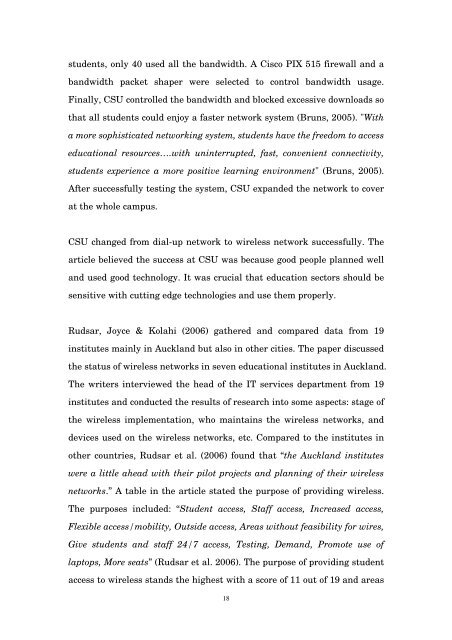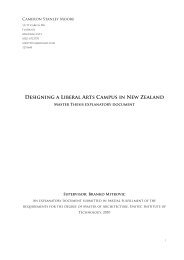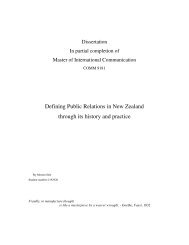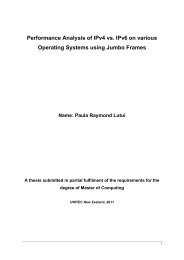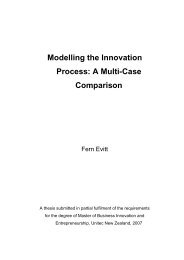The Study of Students Perceptions of On-campus ... - Research Bank
The Study of Students Perceptions of On-campus ... - Research Bank
The Study of Students Perceptions of On-campus ... - Research Bank
You also want an ePaper? Increase the reach of your titles
YUMPU automatically turns print PDFs into web optimized ePapers that Google loves.
students, only 40 used all the bandwidth. A Cisco PIX 515 firewall and a<br />
bandwidth packet shaper were selected to control bandwidth usage.<br />
Finally, CSU controlled the bandwidth and blocked excessive downloads so<br />
that all students could enjoy a faster network system (Bruns, 2005). "With<br />
a more sophisticated networking system, students have the freedom to access<br />
educational resources….with uninterrupted, fast, convenient connectivity,<br />
students experience a more positive learning environment" (Bruns, 2005).<br />
After successfully testing the system, CSU expanded the network to cover<br />
at the whole <strong>campus</strong>.<br />
CSU changed from dial-up network to wireless network successfully. <strong>The</strong><br />
article believed the success at CSU was because good people planned well<br />
and used good technology. It was crucial that education sectors should be<br />
sensitive with cutting edge technologies and use them properly.<br />
Rudsar, Joyce & Kolahi (2006) gathered and compared data from 19<br />
institutes mainly in Auckland but also in other cities. <strong>The</strong> paper discussed<br />
the status <strong>of</strong> wireless networks in seven educational institutes in Auckland.<br />
<strong>The</strong> writers interviewed the head <strong>of</strong> the IT services department from 19<br />
institutes and conducted the results <strong>of</strong> research into some aspects: stage <strong>of</strong><br />
the wireless implementation, who maintains the wireless networks, and<br />
devices used on the wireless networks, etc. Compared to the institutes in<br />
other countries, Rudsar et al. (2006) found that “the Auckland institutes<br />
were a little ahead with their pilot projects and planning <strong>of</strong> their wireless<br />
networks.” A table in the article stated the purpose <strong>of</strong> providing wireless.<br />
<strong>The</strong> purposes included: “Student access, Staff access, Increased access,<br />
Flexible access/mobility, Outside access, Areas without feasibility for wires,<br />
Give students and staff 24/7 access, Testing, Demand, Promote use <strong>of</strong><br />
laptops, More seats” (Rudsar et al. 2006). <strong>The</strong> purpose <strong>of</strong> providing student<br />
access to wireless stands the highest with a score <strong>of</strong> 11 out <strong>of</strong> 19 and areas<br />
18


